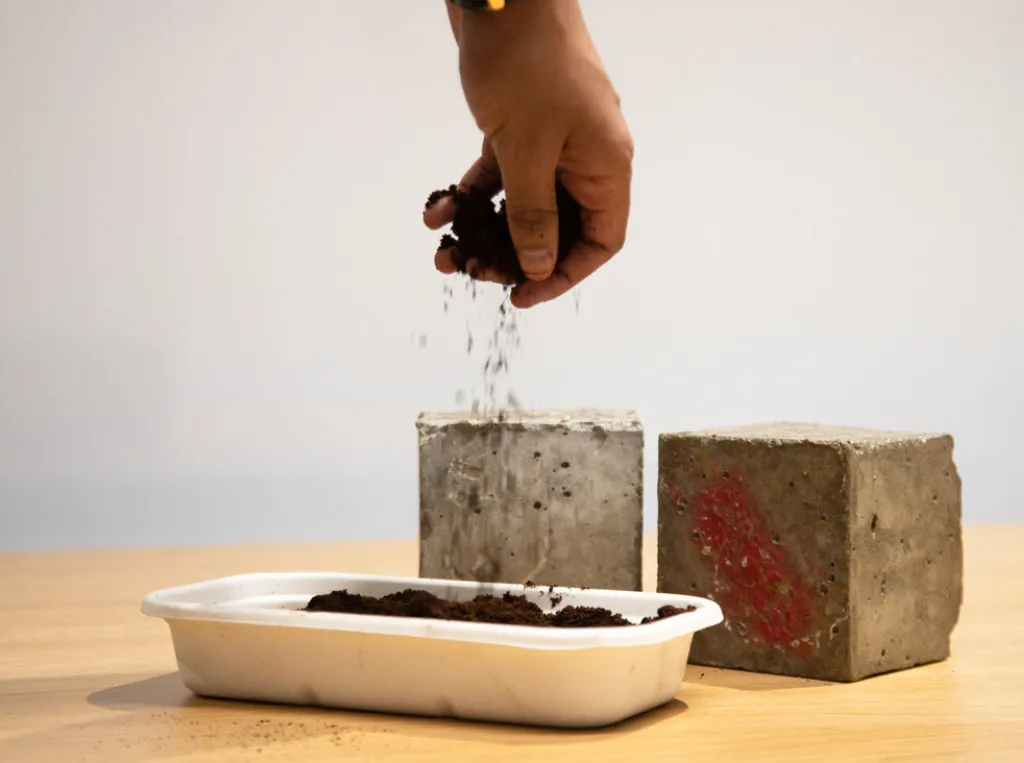In the heart of Tanzania, researchers are brewing up a solution to two pressing global challenges: waste management and sustainable construction. Amani Abdallah Hepautwa, a scientist at the Nelson Mandela African Institution of Science and Technology, is leading a team that’s turning spent coffee grounds into a valuable resource for building materials. Their latest study, published in the journal ‘Frontiers in Built Environment’ (which translates to ‘Frontiers in the Built Environment’), explores the potential of coffee ash biochar (CAB) to enhance the properties of burnt red soil bricks.
The research team collected spent coffee grounds (SCG), a byproduct of the coffee industry that often ends up in landfills, and pyrolyzed them at various temperatures to create coffee ash biochar. This biochar was then incorporated into red soil bricks, which were fired at temperatures ranging from 900 °C to 1,100 °C. The bricks also contained 10% Montmorillonite, a type of clay known for its beneficial properties in construction materials.
The results were promising. “We found that incorporating coffee ash biochar into red soil bricks can significantly improve their mechanical and chemical properties,” Hepautwa explained. The study revealed that bricks containing 5% SCG pyrolyzed at 350 °C showed a 49.7% increase in compressive strength compared to the control. Meanwhile, bricks with 10% SCG pyrolyzed at 300 °C exhibited a 53.5% improvement in compressive strength, a 66.1% increase in flexural strength, and a 38.4% rise in splitting tensile strength.
The environmental benefits are equally impressive. The study found significant reductions in water, chloride, and sulfur penetration, indicating improved durability and resistance to environmental factors. “This approach not only addresses the disposal challenges of spent coffee grounds but also benefits the economy and the environment,” Hepautwa noted.
The commercial implications for the energy and construction sectors are substantial. As the world seeks to reduce waste and lower carbon emissions, innovative solutions like this one could reshape the way we build our cities. The use of spent coffee grounds in brick manufacturing could reduce landfill waste and carbon emissions, promoting resource efficiency and sustainable construction.
The study also highlights the importance of understanding the microstructural behavior of these composite materials. Using techniques like Scanning Electron Microscopy (SEM), X-ray Diffraction (XRD), Fourier Transform Infrared Spectroscopy (FTIR), and Differential Scanning Calorimetry (DSC), the researchers gained insights into the structural integrity and bonding mechanisms within the bricks.
Looking ahead, the team plans to focus on the durability and scalability of this approach for industrial applications. “This innovative method could revolutionize the construction industry by providing a sustainable and cost-effective solution for building materials,” Hepautwa said.
As the world grapples with the challenges of waste management and sustainable development, research like this offers a beacon of hope. By turning waste into a valuable resource, we can create a more circular economy that benefits both the planet and the economy. The study by Hepautwa and her team is a testament to the power of innovation and the potential for a more sustainable future.

